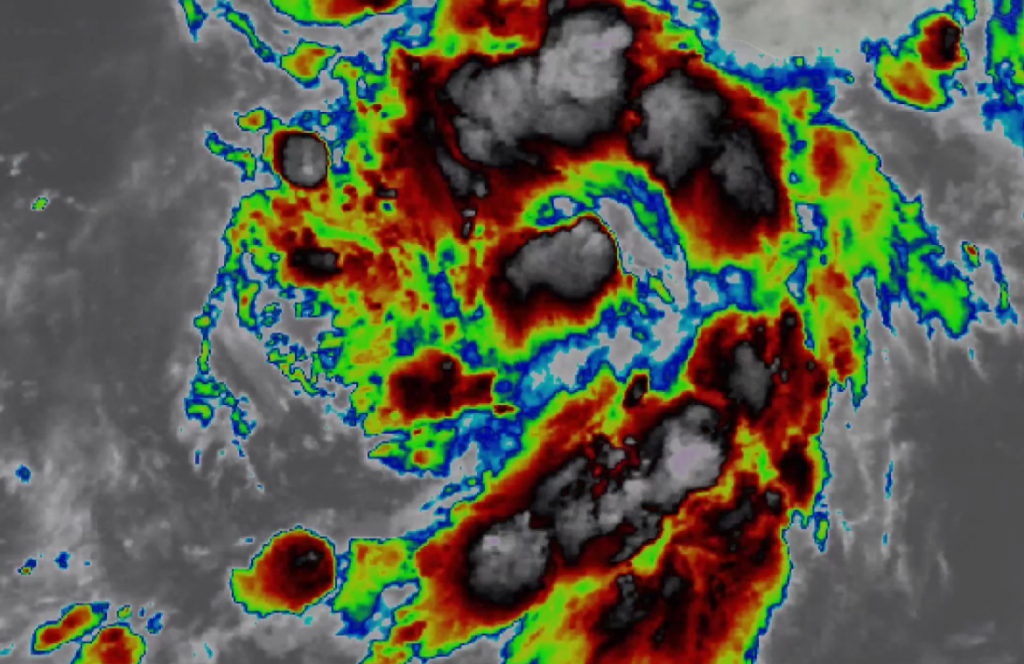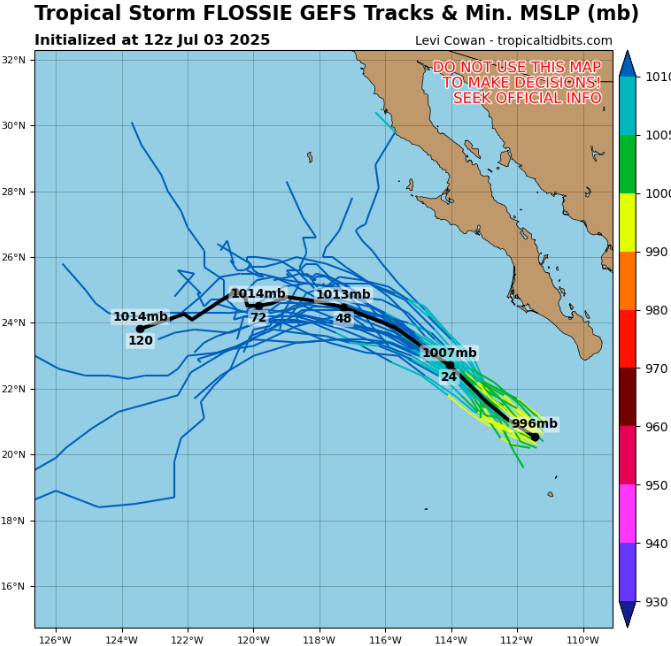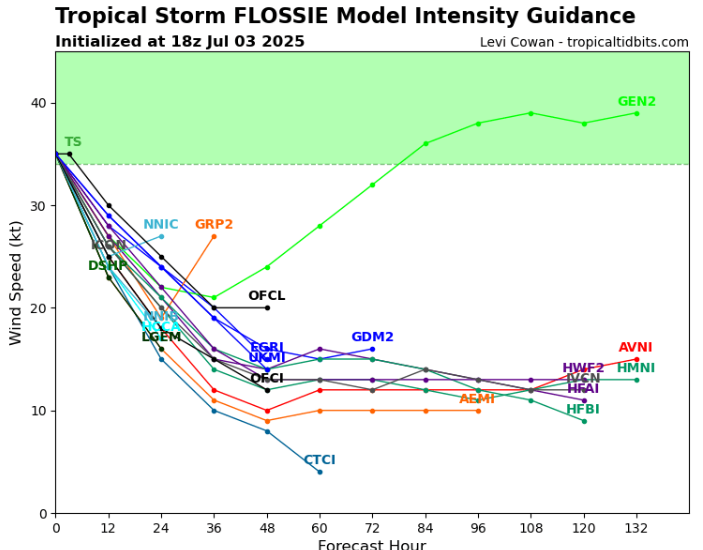
July 2025 – Mexico is once again bracing for impact as Tropical Storm Flossie spins in the Eastern Pacific, bringing the threat of torrential rainfall, flash flooding, and landslides across several western and southern states.
Formation and Current Track
Tropical Storm Flossie formed off the southwest coast of Mexico earlier this week, strengthening rapidly as it moved northwest over warm ocean waters. As of the latest advisory from the National Hurricane Center (NHC), Flossie has sustained winds of approximately 85 km/h (50 mph), with higher gusts, and is moving at a moderate pace toward the northwest. The center of the storm is expected to remain offshore but pass close enough to the coastline to produce significant impacts.
Areas at Risk
States including Guerrero, Michoacán, Colima, and Jalisco are still under storm alerts, with warnings issued for high surf, coastal flooding, and heavy downpours. Local authorities are especially concerned about mountainous regions where saturated soil could lead to deadly landslides. Flash flood warnings have also been extended inland, with rainfall totals possibly reaching 150–250 mm (6–10 inches) in some areas, and isolated amounts over 300 mm (12 inches).
Preparedness and Response
Civil protection agencies in several Mexican states were evacuating high-risk communities and setting up temporary shelters. Emergency services are on high alert, and residents are being urged to avoid rivers, low-lying areas, and unstable hillsides. Fishermen have been advised to secure their boats, and ports in the affected areas have been closed.
President Andrés Manuel López Obrador addressed the nation briefly, encouraging citizens to follow local authorities and prioritize safety. “Nature must be respected. Please evacuate if you are asked to,” he said.
Broader Context
Tropical Storm Flossie is part of an above-average Eastern Pacific hurricane season, driven by warmer-than-usual sea surface temperatures. Flossie is the fifth named storm of the season, and forecasters warn that more may follow in the coming weeks. Climate experts note that such storms are becoming more intense and wetter due to climate change, leading to heightened risks even from “moderate” tropical storms.
Outlook
While Flossie is not expected to become a hurricane, its slow movement and moisture-rich environment make it a dangerous storm for the Mexican coast. Forecast models suggest the system will begin to weaken as it moves over cooler waters later this week, but not before delivering a heavy blow to vulnerable communities.
Conclusion
Tropical Storm Flossie serves as another reminder of the growing threats posed by tropical systems in the era of climate instability. Mexican authorities and citizens alike are watching the skies and rivers carefully, hoping to weather the storm with minimal loss of life and property.


Source: https://www.tropicaltidbits.com/storminfo/#06E

Source: https://x.com/BackpirchCrew/status/1939335749536485484


























